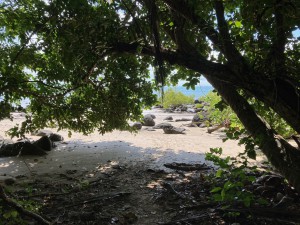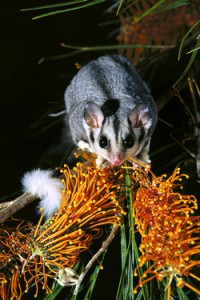Welcome to our August update everyone! Special “stay safe and stay well” wishes to those of our readers in Covid hotspots or affected by lockdowns – and please make sure you, your kids, your grandkids, and everyone you know disposes of those ‘surgical’ masks safely and snips the straps too! Read more here.
August Field trip Sunday 22nd: We will stay local with this month’s trip, visiting the Ross River Dam and adjacent Borrow Pits if time allows. Meeting at 9am at the park below the Dam we will climb to the top and walk around the wall. How far we get will depend on how much there is to see and what people are comfortable with, but there should also be the opportunity to have a walk round the Borrow Pits, last visited post floods in 2019. Trip leaders will be Denise and Beth. Bring usual requirements of hat, water, snacks, walking shoes, sunscreen, mossie repellent plus camera and binoculars as you wish. The trip should finish by lunchtime. Non-members welcome.
Walking Dunk Island – the trip that wasn’t! Our planned trip to Dunk Island with the Cassowary Coast and Hinchinbrook Branch in July unfortunately came adrift when the water-taxi company reported the boat’s motor had failed. Three of us received this news when we were already on our way north on Saturday but, after a few phone calls and a discussion over coffee and sandwiches in Ingham, Julia decided to find a campsite locally and enjoy a completely different weekend, while Alison and I went on to our Cardwell accommodation which was already booked and paid for. The two of us had a beautiful late afternoon walk along the wild beach in the nearby Girramay National Park (Edmund Kennedy section) and enjoyed the magic of a full moon rising over Hinchinbrook, before driving on to Mission Beach the next morning to meet the folks from the CC&H Branch for Plan B.
With the inaccessible island lying tantalisingly offshore we enjoyed two of Mission Beach’s most attractive walks: the Cutten Brothers and Lacey’s Creek tracks. The former deserves to be much better-known as it winds through a rare example of complex mesophyll lowland vine-forest behind a lovely stretch of unspoiled sandy beach. Meeting an orange-footed scrub-fowl in charge of his giant nesting mound was a bonus. We certainly did not regret our decision to continue north to enjoy such delightful company and surroundings and I’m sure Julia did not regret her camping experience at Mungalla Station – is this a possible venue for one of our trips? As members will know, the Dunk Island trip was rearranged for Sunday 15th but I believe no-one from Townsville could make it. Maybe next year?
June trip to Tyto wetlands: No boats required for this trip, which went ahead under misty grey skies, also in company with our sister Branch. You can read Denise’s report here.
Mahogany Glider Recovery Team: The recent COVID lockdown in Cairns forced the postponement of the MGRT meeting which four members of the Branch committee planned to attend. It has been rescheduled for 25 August and we hope to include a summary in our next update.The Recovery Team meets several times a year in either Cardwell or Tully to discuss all matters pertaining to Mahogany Glider conservation, management and research. It is nationally constituted under the Department of Agriculture, Water and Environment (DAWE) and is responsible for providing advice and implementing actions required under the Recovery Plan. Its members are drawn from a number of Government and semi-government organisations (local, state and federal) as well as from Indigenous, conservation and other community groups. Since 2018 we have been included in these meetings and usually manage to have at least 2 members present.
Ergon engages with Wildlife: It was a pleasure to be approached by the senior community engagement advisor from Ergon Energy, asking if we would be interested in being part of a joint Ergon / Men’s Shed project to build nest or den boxes for wildlife. A productive meeting was held at the end of July at which we discussed the type of boxes we would be most interested in, at this stage, and the specifications regarding dimensions, materials and structure. A big tick to Ergon for initiating and supporting projects which benefit both the human community and our wildlife. Watch this space …..!!
Sugar is sweet – but what’s in a name? In 2020, on the basis of genetic and morphological analysis, a group of researchers divided what had been regarded as a single species of glider (Petaurus breviceps, or Sugar Glider) into 3 distinct species. The research group retained the original scientific and common names (as above) for the species found along the coastal strip of SE Queensland and NSW, but recommended new names for the remaining two: P. ariel or Savanna glider for the species found across the ‘top end’ (north-west Qld, NT and northern WA) and P. notatus or Krefft’s glider for the species found in a broad sweep from far north Queensland, down through NSW, Victoria and across Tasmania (where it was introduced). This species ranges further into inland areas than the other two.
Mammalogist John Winter has written a short but lucid proposal offering different recommendations regarding two of the common names (which, unlike scientific names, are not governed by hard and fast rules). While happy with Savanna glider for P. ariel, John has suggested Coastal sugar glider for P. breviceps (which really does hug the coast) and is considering several options, including Inland, Common or Eastern sugar glider for P.notatus. If you have comments or alternative suggestions, he would be happy to hear from you (click here) but if possible do this within the next week, so that he can approach the Australian Mammal Society. If you would like a copy of John’s proposal with a population distribution map and the reasons for his recommended names, please contact us.
NB Copyright of all images in this post resides with the photographers. Pease contact us for permission to use.






